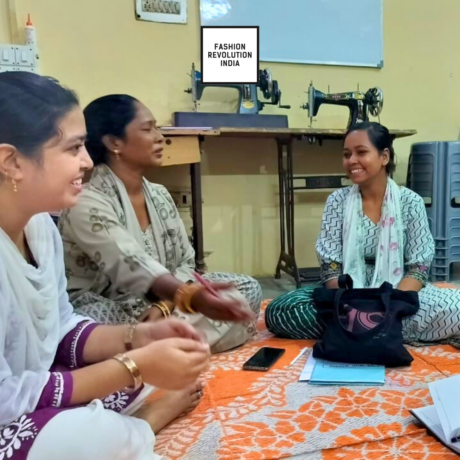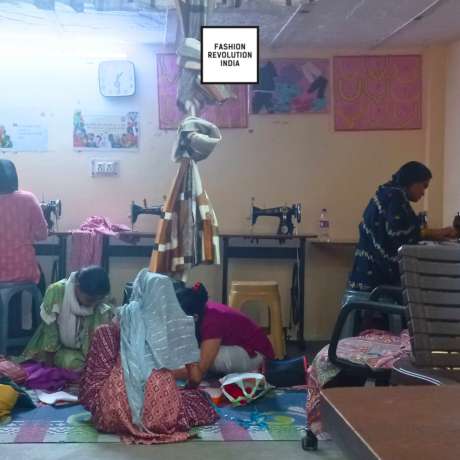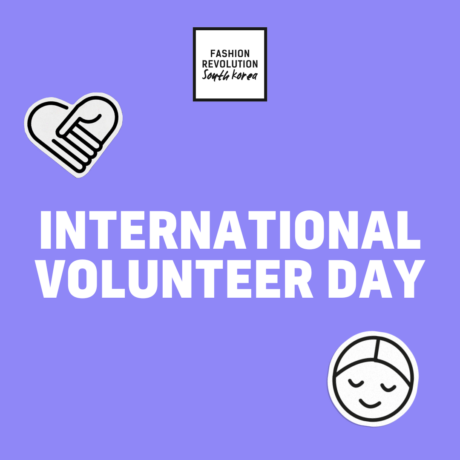Welcome to the Fashion and Race Database
Point number 5 in our Fashion Revolution manifesto reads, ‘Fashion stands for solidarity, inclusiveness and democracy, regardless of race, class, gender, age, shape or ability. It champions diversity as crucial for success’. Yet fashion is notoriously exclusive and obsessed with narrowly defined beauty standards. When we think of some of the mainstays of fashion theory – like trickle-down theory, which suggests that fashion trends emerge from celebrities or aristocrats, and are adopted by the mainstream through copying – it’s no wonder that the fashion industry has a track record of systemic discrimination.
Kimberly Jenkins is a fashion theory professor, founder of the Fashion and Race Database, and all-around expert in fashion theory. Below, we speak to Kim about her journey in shaping a more equitable fashion industry through education.
Bronwyn: At Fashion Revolution, we largely campaign on the social and environmental issues in the fashion industry. Part of that is exploring how fashion is exclusive, so I wanted to start by asking you who you think is being excluded from the fashion industry?
Kimberly: In terms of exclusion, I don’t know if it’s always an explicit inclusion, but fashion is definitely not made to be an inclusive or hospitable place. That is, for people who fall outside of the beauty ideals of whiteness, thinness, heteronormative ideals, and physical ability. Those are the top ones. I think that fashion brands, if they were to read this, they would probably say, ‘I’m not racist’, or ‘I’m not ableist’. But as an industry culturally, if we were to base our perspective on the representation we’ve seen in the last half century, it definitely has not made for a hospitable or an inclusive space. It makes it very difficult for people to imagine themselves in those spaces.
Bronwyn: I suppose that’s also particularly relevant in academia, where you want students to be inspired by an industry if they’re going to enter into it as a career choice?
Kimberly: Right. We’re only as good as our models. And that is why we literally have models in fashion. To model what is beautiful, what we value, what we prize and what we should aspire to. And then when you put those bodies in objects of adornment, that we associate with luxury, you make the association, ‘I have to look like that to be associated with the prestige or the values of that brand’. Even in the business of fashion, it’s the, ‘I don’t see myself working at that magazine because everyone looks alike and it’s a very homogeneous culture and the articles that they publish don’t speak to me’.
Bronwyn: My experience in fashion is that many people think of this industry as incredibly fluffy, compared to other more ‘serious’ industries. How would you explain, to some who thinks that fashion is entirely frivolous, that it’s actually very significant?
Kimberly: Part of my work as a fashion studies scholar is, unfortunately, constantly having to defend fashion… The work that I do works to expand the definition of fashion to be more than just fashion with a capital ‘F’. It’s also a phenomenon, something that we’re all engaged in. We all make a decision, whether you like it or not, every day, on how we want to look, how we dress ourselves, how we show up in society. How we use our own appearance, including hair, to affirm our sense of identity, our family, our culture, our faith, our belief system. All of that is a decision we make every single day. And added to that, fashion can also be seen as a verb. It’s ‘fashioning your identity’, this constant practice of reconciling who you believe you are with how you appear and present yourself to society.
Bronwyn: Fashion and Race is a course that you created at Parsons. Can you tell me about the gap in fashion learning that it filled?
Kimberly: The school where I was teaching, which is also the school where I graduated from, they had this really democractic process where they allowed instructors to pitch ideas for new courses they would like to teach… I felt that one thing that was kind of missing, was that it could be diversified. So I wanted to give it a shot and pitch a course where in my syllabus I take you through this journey and we consider the intersection of fashion and race. Questions like, ‘where does this western beauty cannon come from?’, ‘what is race to begin with, why do we even have this word?’, ‘what has been the impact of race in historic fashion imagery, in magazines and art?’, ‘what has been the impact of fashion and cultural appropriation?’, ‘what is the impact of race and retail discrimination?’.
Bronwyn: This made me think about the fashion history I took during my fashion education, which was kind of a run-of-the-mill fashion history but really only covered the very western fashion history.
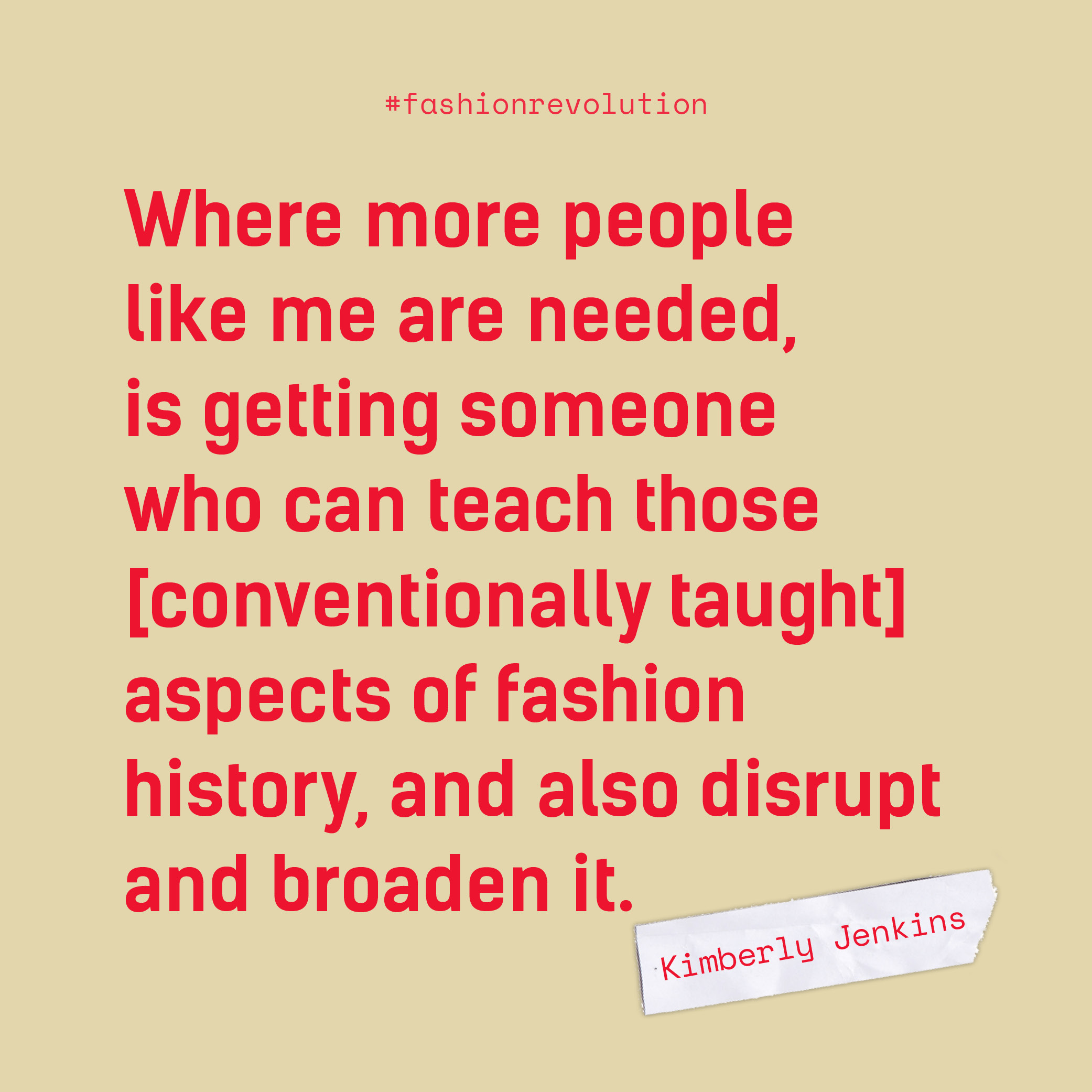 Kimberly: I think what makes my work critical, along with the very small handful of other scholars of colour, especially Black professors who’ve survived in fashion academia, is how limited the opportunities are to teach in these spaces… I have a degree in fashion studies, and for about 6 years I’ve been teaching fashion studies courses and fashion history courses. I’m teaching these as a Black woman, and having to study everything there is to know about Euro-American fashion history. I can do it. Where more people like me are needed, is getting someone who can teach those aspects of fashion history, and also disrupt and broaden it.
Kimberly: I think what makes my work critical, along with the very small handful of other scholars of colour, especially Black professors who’ve survived in fashion academia, is how limited the opportunities are to teach in these spaces… I have a degree in fashion studies, and for about 6 years I’ve been teaching fashion studies courses and fashion history courses. I’m teaching these as a Black woman, and having to study everything there is to know about Euro-American fashion history. I can do it. Where more people like me are needed, is getting someone who can teach those aspects of fashion history, and also disrupt and broaden it.
Bronwyn: Now, ‘Fashion & Race’ exists as a database you created as a sort of research archive. Can you tell me about it?
Kimberly: In 2017, in the spirit of working on this Fashion & Race course, and building the syllabus, I had to go through numerous sources in order to think through these intersections of fashion and race. In these sources that I pulled together, I decided to just purchase a website domain and set up the site as a place called the ‘Fashion and Race Database Project’, where I was posting all of the sources that I was pulling together through my teaching process. It was almost like an online super-syllabus, because I was giving an entire spread of books, articles, video lectures, scholars around the world who were also teaching about these intersections, because I’m by no means the only person doing this. I got a full time professor position at Ryerson University, and so I was able to upgrade – in a major way – this little website that I was making for the world to see, as this kind of public service project… We releanched in July of 2020, that was the original plan that we were talking about in April 2020, and unbeknownst to many of us, we got thrown – especially in the United States – into a racial reckoning by the end of May. May 25th to be exact.
This small, quiet website that I was relaunching suddenly turned into this global crucial resource for people to study and learn more about race. It’s really speaking to its usefulness right now. The fact that the industry is reaching for [the Fashion & Race Database] means that the whole fashion system in general is coming to terms with this and admitting that [racism] is a huge blindspot.
Bronwyn: I also wanted to ask you about May 2020, because we saw tons of brands either posting black squares or posting their press statements onto their Instagrams and making lots of promises but not necessarily following through. What will it take for brands to lead with action and follow rather than PR?
Kimberly: If businesses want consumers to take them seriously, they need to have an authentic or sincere response. Because a black square is not enough, saying that you’re listening and learning is not enough. You need to then really put yourself out there and take a risk. Announce how you’re going to put your money where your mouth is. In what ways are you going to invest in a diverse company culture? If anything can be considered a transgression in your business, in terms of how you’ve been getting it wrong, harming or excluding groups of people, make it plain the steps you’re going to take. What major structural changes are you going to make, starting today? Because people are smart. On social media, it is not enough to suddenly throw a bunch of diverse looking models onto your grid and pandering to us with diverse faces. We want to know if we open the doors to your executive board, when it comes to the power structure, what does it look like? How diverse is it really? Taking a risk is actually hiring someone in the highest tier of your decision making process and operating from there.
Bronwyn: A final question for you, where do you want to see the fashion industry in 10 years’ time?
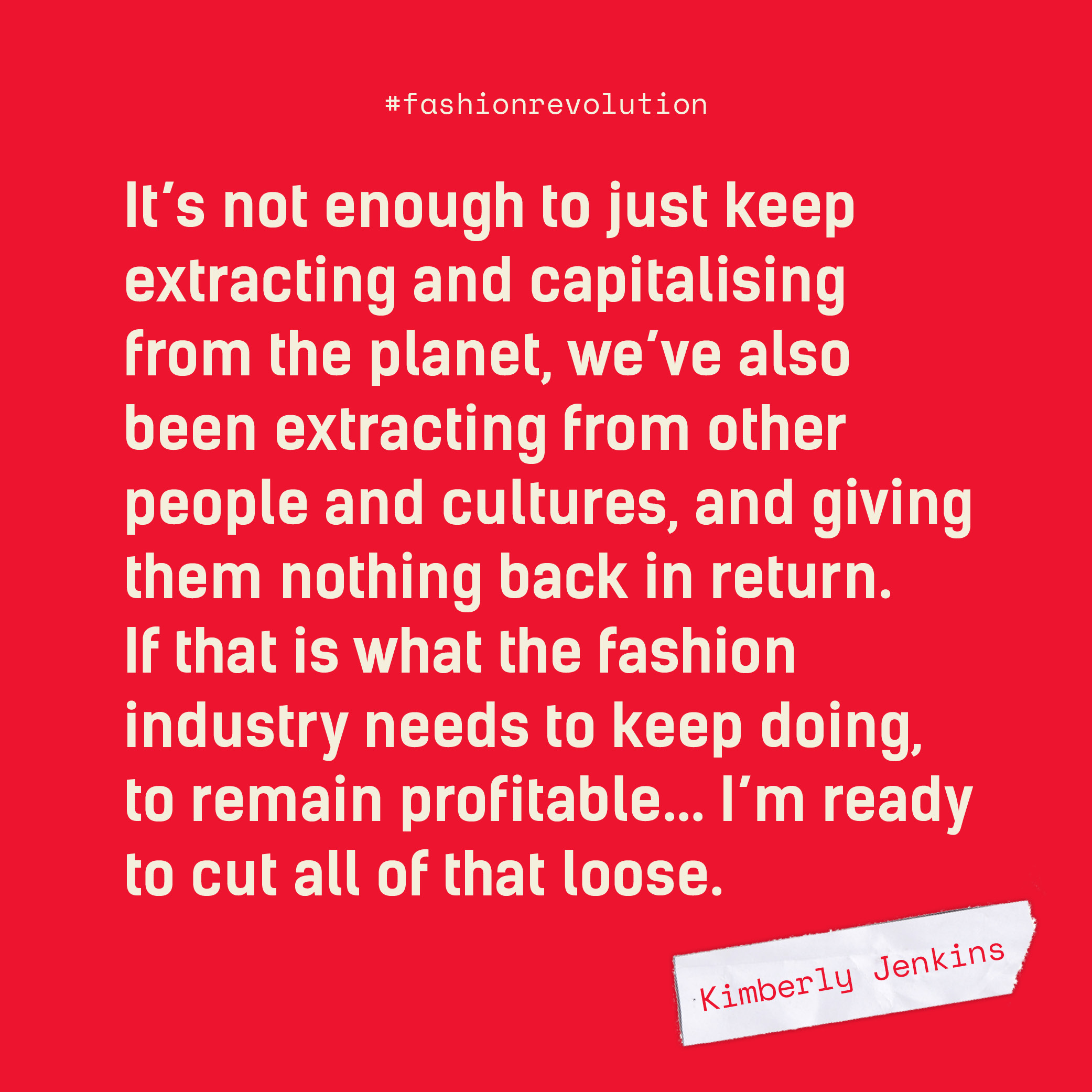 Kimberly: In answering that, I’m almost envisioning something I’ve never known before, or desiring something I’ve never experienced. But I wouldn’t mind seeing it… Right now, the fashion industry as we know it has to depend on global travel, lots of it, and mass production. And to mass produce things so that [every big brand] can be a household name across the globe involves someone being overworked and underpaid, suffering in some sort of way. It involves extracting from the environment’s natural resources, more than is natural and necessary. It involves us wanting more than we need. And it gets us to doubt ourselves, our potential, our own beauty. Not only do we have complaints about this over-extraction of the planet’s resources, but cultural appropriation, human extraction. It’s not enough to just keep extracting and capitalising from the planet, we’ve also been extracting from other people and cultures, and giving them nothing back in return. If that is what the fashion industry needs to keep doing, to remain profitable, and to stay in motion, I’m ready to cut all of that loose, we don’t need it.
Kimberly: In answering that, I’m almost envisioning something I’ve never known before, or desiring something I’ve never experienced. But I wouldn’t mind seeing it… Right now, the fashion industry as we know it has to depend on global travel, lots of it, and mass production. And to mass produce things so that [every big brand] can be a household name across the globe involves someone being overworked and underpaid, suffering in some sort of way. It involves extracting from the environment’s natural resources, more than is natural and necessary. It involves us wanting more than we need. And it gets us to doubt ourselves, our potential, our own beauty. Not only do we have complaints about this over-extraction of the planet’s resources, but cultural appropriation, human extraction. It’s not enough to just keep extracting and capitalising from the planet, we’ve also been extracting from other people and cultures, and giving them nothing back in return. If that is what the fashion industry needs to keep doing, to remain profitable, and to stay in motion, I’m ready to cut all of that loose, we don’t need it.




